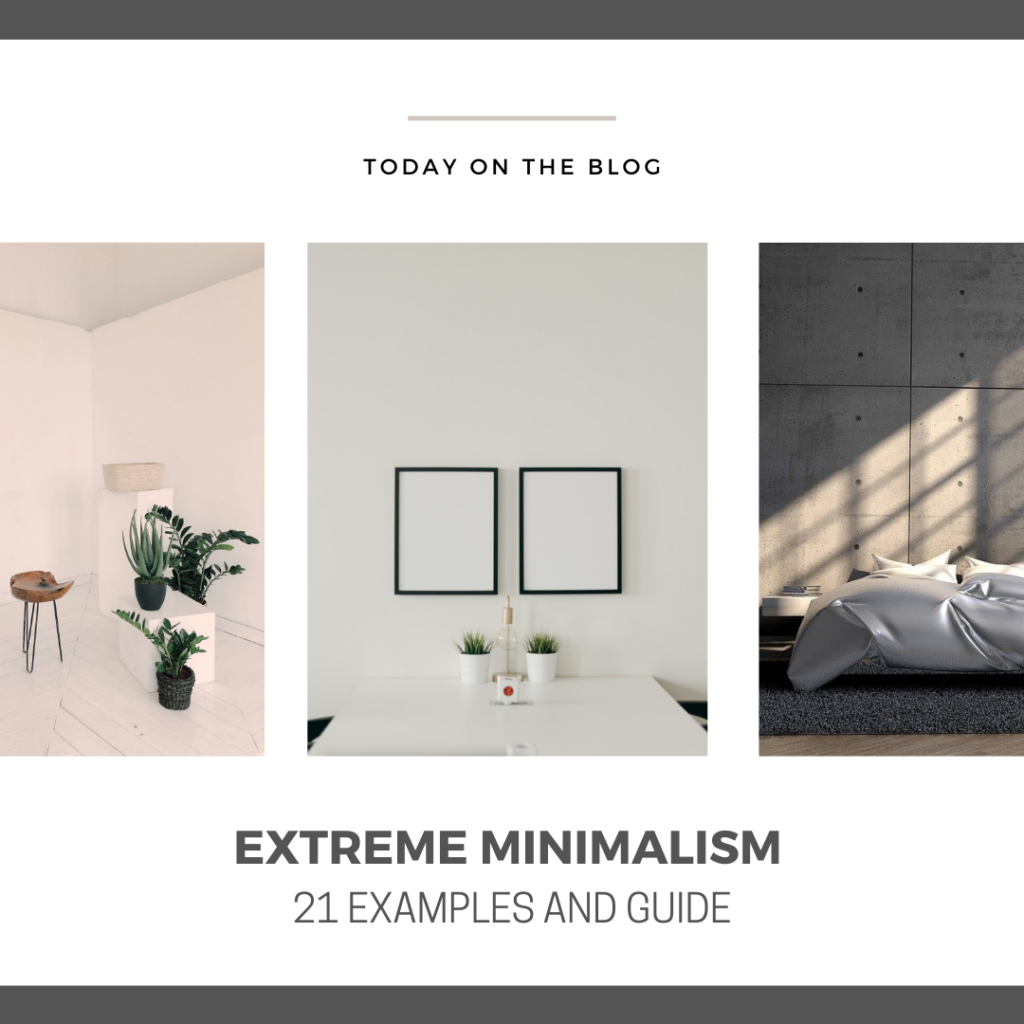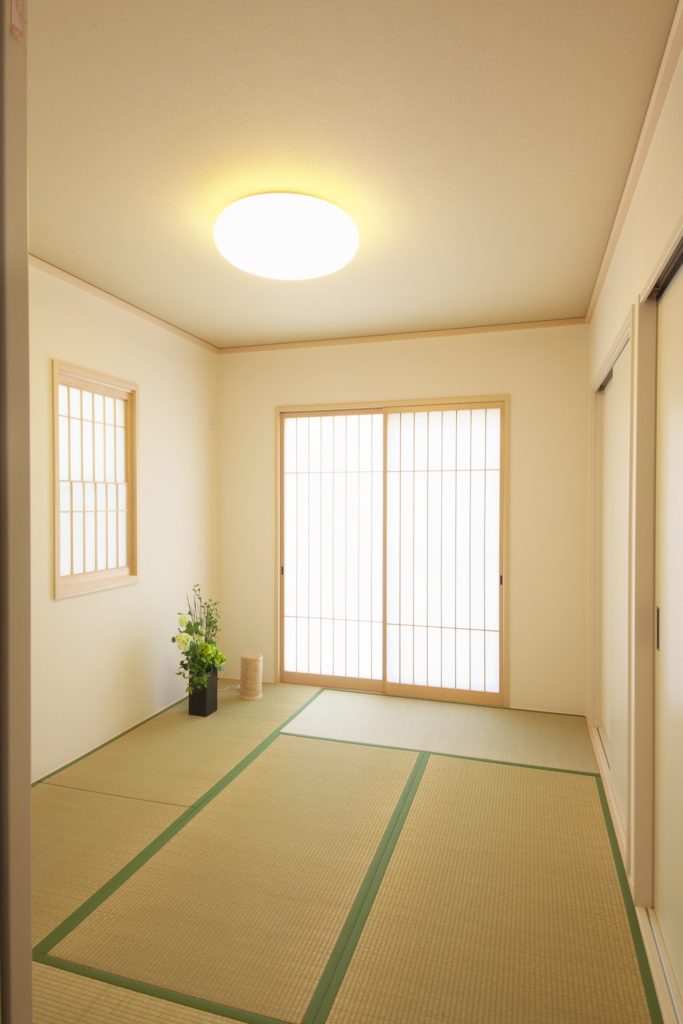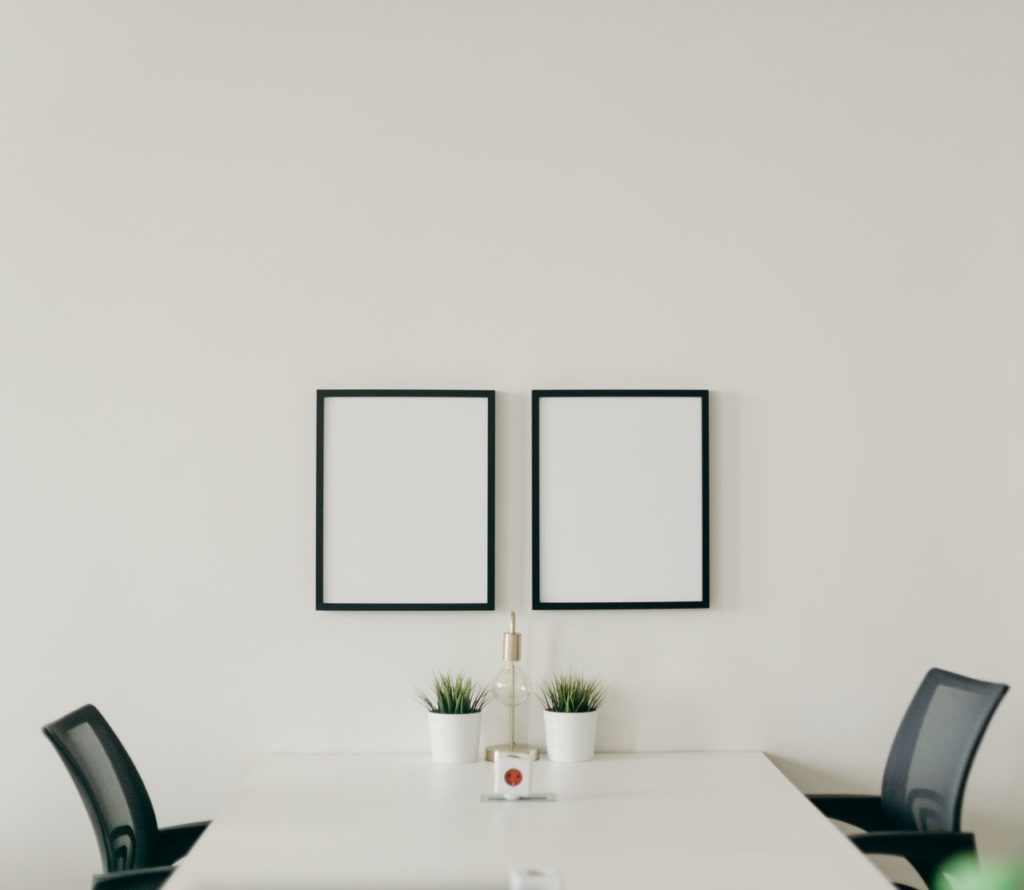The first time I heard of minimalism was when I was planning to become a digital nomad. At the time, I was looking for ways to help me decide what to carry.
During this one year, I only carried things that I needed for my survival. This was my laptop, phone, credit cards, and a few articles of clothing. I have since gone back to my everyday life, but the minimalism trend keeps growing.
And as more people switch to minimalism, some are adopting a more radical version of this lifestyle, namely extreme minimalism.
In todays post, we discuss this radical version of Minimalism. In this post, you’ll learn what extreme Minimalism is, the benefits of adopting this lifestyle, as well as 21 examples of how you can live as an extreme minimalist.
Let’s get right into it:
What is Extreme Minimalism?
Like most people, you’ve probably heard of minimalism. If you’ve not, minimalism is a lifestyle practice that focuses on consciously owning fewer material possessions.
First coined in the art scene, the term minimalism has grown to represent a lifestyle that seeks to reduce clutter in all aspects of life.
Extreme Minimalism is a more radical version of this lifestyle. With extreme Minimalism, you choose to live a life with only the most basic necessities. Extreme minimalists make a conscious decision to own as little as possible. Everything they own is carefully thought over, and only the most essential items are maintained.
Bet you’re wondering, “why would someone choose to live as a minimalist, let alone an extreme minimalist. “
Keep reading to find out?
Why Become an Extreme Minimalist?
It Allows You to Focus on Your Passions
One of the main reasons people choose Minimalism is to focus more on their passions and goals.
As a young person, being a minimalist means you may need to get rid of some of your electronics, clothes, and other material possessions. By doing this, you get more time to focus on what matters in your life.
Someone who chooses extreme Minimalism doesn’t have that much clutter in their life. In most instances, they don’t have TV, wear basic clothing, and have minimized phone usage. Without the distraction and noise from these possessions, it becomes easier to focus on goals and focus.
Extreme Minimalism Provides a Way to Escape Debt
You may also choose to adopt extreme minimalism if you’re looking to manage or avoid debt.
One form of extreme minimalism is tiny house living. With such an option, you slash mortgage and electric costs, resulting in reduced cost of living.
And that’s not all!
With extreme Minimalism, it’s also possible to live a frugal lifestyle, allowing more savings and investments.
As an Extreme Minimalist, You Have More Time in Your Day
While we all have 24 hours a day, being an extreme minimalist is bound to give you an advantage over most people.
As an extreme minimalist, you’ll have fewer clothes to clean, a less cluttered house to organize and maintain. You shopping won’t also take up as much time as other people.
By owning fewer items, you get to save time, which you spend doing things you love.
Extreme Minimalists Are Less Stressed When Travelling
How stressful is it to pack for a trip?
If you’re like most travelers, packing is always a headache due to the amount of luggage you have to carry. Not to mention the risk of losing your bags while on transit.
As an extreme minimalist, this is a non-issue. In most instances, all your belongings will fit in one carry-on bag, which reduces the risk of loss. With fewer items, it’s easier to carry your luggage.
Some other reasons why someone would choose to become an extreme minimalist is because:
- It allows you more time to spend with family and friends
- You’re more empathetic to the less fortunate in society
- It frees up funds that you can use to support charitable causes
- Allows you to be environmentally conscious.

21 Examples of Extreme Minimalism
#1. Getting Rid of Over 95% of Your Clothes
Whether a minimalist or extreme minimalist, one of the first things you’re likely to do is declutter your closet.
For an extreme minimalist, this means getting rid of over 95% of your clothes.
Sounds impossible, right?
However, some extreme minimalists survive with one pair of pants, one pair of shorts, two shirts/t-shirts, and two underwear and socks.
By getting rid of most of your clothes, you’ll have created a personal uniform.
#2. Owning a Single Pair of Shoes and Sandals
If you’re like most, you probably own several pairs of shoes. As an extreme minimalist, you’ll also have to get rid of most of your shoe collection.
In most instances, extreme minimalists own one pair of high-quality shoes and sandals.
Wondering which shoes to keep?
Since you’ll mainly be seen in one outfit, pick the shoe that goes best with your remaining clothes.
#3. Owning Zero Hardcopy Books
Don’t get me wrong!
Physical books are great. They are more interactive, cause less eye strain, and have that old book smell. They also make great decoration pieces—a bookshelf full of books is an excellent interior design feature.
However, constantly collecting books leads to clutter.
As an extreme minimalist, the best way to read is to go paperless. This could entail reading PDFs on your phone, laptop or using your kindle. With these digital reading devices, you don’t need a bookshelf to store all your books.
Other than space, digital reading is also better for the environment and is also cheaper—kindle books are cheaper than hardcover books.
#4. Having One or Two Pieces of Makeup
This example is mainly meant for the ladies.
While decluttering, you’ll also need to get rid of most items in your makeup collection. Most extreme minimalists will mainly have lip balm and eye shadow as their only pieces of makeup.
I’m not telling you to keep only these. You’ll be the one to decide what to keep and what to declutter.
#5. No Furniture Living Room
I heard of this form of extreme minimalism after watching Youheum Son’s YouTube video.
Youheum doesn’t own a table, couch, or chair. From her video, the living room feels naked and incomplete. For most people, this is considered extreme.
However, Youheum explains that human ancestors survived without furniture. This lack of furniture makes it easy for her to move and travel without worrying about storage.
So, if you’re looking to become an extreme minimalist, you may have to get rid of all your chairs, sofas, and tables—time to embrace floor living.

#6. Owning No Jewelry, Except a Wrist Watch
Jewelry isn’t necessary for your survival. On most occasions, jewelry is usually a luxury that you can do without.
So, if you’re looking to become an extreme minimalist, you may have to declutter your jewelry collection to only remain with the most essential pieces. In most cases, it’s the watch, engagement ring, and wedding ring that’ll remain.
#7. Living with Only a Few Accessories
Just like jewelry, some accessories are unnecessary.
As someone taking Minimalism to the extremes, you don’t need several pairs of sunglasses, hats, or gloves. One set of each is enough for you.
So, if you’ve been hoarding sunglasses, have several hats, and own multiple pairs of gloves, it’s time to donate the extras.
#8. Sleeping on a Mattress Bed or Hammock
If you’re comfortable enough to live with no furniture in your living room, getting rid of your bed shouldn’t be much of a problem.
According to extreme minimalist Youheum Son, it’s possible to survive on a mattress bed. If you have a high-quality mattress, it’ll be as comfortable as a standard bed.
If you feel as if a mattress is too space-consuming, you can go for a futon. With a futon, you can easily fold it and keep it away when not in use.
If you’re an outdoorsy person, you can also consider a wall-mounted hammock for your bed.
#9. No Spare Beddings
If you’re going to live furniture-free, what’s the point of having extra beddings and sheets?
While decluttering your closet, you should also consider getting rid of beddings that you don’t use. As an extreme minimalist, you’ll only need one set of beddings, and you’re good to go.
#10. Fewer Phone Apps
A high chance is that you’re reading this post from your phone.
I want you to go to your app usage setting and check the number of apps you haven’t used in a week. If you’re like most, including me, there are several apps that you haven’t used in a while.
First, get rid of these apps. After that, focus on apps that aren’t necessary. At certain times, I’ve uninstalled all social media apps, only remain with the native apps that came with the phone.
Removing most of the apps on your phone will clear space and reduce the number of distractions throughout your day.
And if you feel as if that’s not enough, you can choose to get rid of your smartphone altogether and start using a flip phone—one whose only role is communication.
#11. No Shower Curtains
Don’t get me wrong! Shower curtains are great if you’re looking to improve privacy and the aesthetic of your bathroom.
However, they can also collect water from your bathtub and drip on the floor, which is messy. It also takes time to clean them. Vinyl shower curtains also contain chemicals that are harmful to human health.
So even if you’re not an extreme minimalist, it would be in your best interest to avoid shower curtains. As an extreme minimalist, you only keep useful things. Shower curtains aren’t an essential must-have.
#12. Using One Soap
If you’re like most, your bathroom is probably crowded. There are shower gels, shampoos, body oils, and shaving cream, among other products.
For extreme minimalists, it’s the opposite. Most extreme minimalists only have one natural bar of soap for their cleaning routine.
Whether it’s washing and conditioning hair or ensuring your skin is soft, one high-quality soap can do all this. So, if you’re looking to adopt an extremely minimalist lifestyle, switch your multiple products for a single bar of soap.
#13. No Contact Lenses
One reason people switch to extreme Minimalism is to reduce the amount of time wasted doing certain chores.
This is why most extreme minimalists choose to avoid contact lenses and opt for glasses instead.
Contact lenses need more care than glasses. Not only do you have to clean them often, but you also have to store them carefully and need to have clean hands before putting them on.
For an extreme minimalist, this is adding unnecessary stress to their life. So, if you’re looking to transition to extreme Minimalism, consider glasses instead of contacts.
#14. Zero Waste Habits
I know what you’re thinking.
All through the post, I’ve told you to get rid of most of your stuff. How then are you supposed to achieve zero waste while you keep getting rid of your stuff?
However, by getting rid, I don’t mean dropping all your stuff at a landfill. You can get rid of your stuff by either selling or donating to a charity.
As an extreme minimalist, most of your life should be aimed at achieving a zero-waste lifestyle. Nothing goes to the landfill.
One of the ways extreme minimalists do this is by using composting toilets, which need little water. Some go as far as opting to avoid toilet paper for more sustainable products.
And that’s not all!
By being an extreme minimalist, you buy less stuff; therefore, reduce the risk of sending plastics to the landfill.
Some extreme minimalists will also avoid using single-use plastic bags in a bid to ensure zero waste.
#15.Minimalist Interior Décor
Other than going furniture-free, you can also practice extreme Minimalism with your home décor.
One way to do this is by having a limited color pallet for your walls and decorations. You can choose to paint all walls in your house white, grey, black, or brown.
You can also choose to have no paintings on the wall and just a single lamp to provide light.
In the next point, we discuss minimalist décor on a large scale.

#16. Tiny House Living
Tiny house living has been on the rise in the past few years, with more people embracing this minimalistic type of life.
Rather than owning a big house with tons of unused space, some people opt to own a small house with only the needed essentials. For extreme minimalists, this is usually a bed and a space for cooking and eating.
One of the best things about this type of lifestyle is that you’re free from mortgage and can easily travel without the worry of your house being robbed.
Some extreme minimalists have even gone further to explain that tiny houses are also more intimate for couples since you spend most of the time in one room.
#17. Living Out of a Backpack
Imagine if all you owned could fit in one backpack.
That’s the life that extreme minimalist Rob Greenfield lives. With only 44 possessions, Rob’s whole life can fit in a backpack.
This is one of the most extreme forms of Minimalism since you’ll have to reduce your possessions to your bare essentials. This means less than 50 possessions.
If you’re already practicing some of the examples in this post, it won’t be hard to switch to living out of your backpack.
#18. No Cookpots and Pots
What’s the point of owning cooking pots if you’re always traveling or eating out?
Even if you plan to cook, one cooking pot that also serves as a dish would be enough for you. Rob Greenfield does it, so it’s not impossible to survive with one cookpot.
#19. No Electronics
Whether a minimalist or extreme minimalist, limiting the number of electronics you own should be a significant part of your minimalism journey.
With a laptop, you can watch TV, and listen to the radio. You don’t need to purchase an expensive camera and gear if you own a high-quality smartphone—unless you’re a photographer or filmmaker.
All you need to do is assess what electronics are a must-have, then get rid of the rest.
#20. Letting Go of Unnecessary Emotional Attachments
Extreme Minimalism doesn’t only mean getting rid of material possessions.
When transitioning to this lifestyle, you also need to declutter your mind off all unnecessary emotional attachments.
Wondering how to do this?
Check out our article on how to clear your mind for tips on how you can let go of emotional attachments.
#21. No Souvenirs
You may have decided to become an extreme minimalist so that you can easily travel. However, one problem I noticed as a digital nomad was the compulsion to collect souvenirs from the places I visited.
Don’t fall prey to this compulsion.
Rather than focusing on material possessions, focus on creating memorable moments when you visit new places.
After reading all this, you may be wondering, “could giving up most of your material possessions result in you being happier?”
We cover that in the next section.
Are Minimalists Happier?
To answer this question, let’s first consider some scientific studies on the effect of money and happiness.
One of the most prominent studies on this issue is a Princeton University study investigating if lottery winners were happier than regular people. According to the study, more money doesn’t necessarily mean more happiness. The study revealed that the lottery winners were equally as happy as people who could meet their basic needs.
Don’t get me wrong, having more money is likely to result in overall life satisfaction. However, more money doesn’t mean more happiness. Based on this study, a middle-class family is equally as happy as Jeff Bezos.
This doesn’t mean that minimalists are happier. However, the constant pursuit of material possessions has been linked to instances of low self-esteem and unhappiness.
As a minimalist, you’re likely to happier than someone who spends their time pursuing material possessions. Part of the reason for this is because you get to use your money for more meaningful things.
Rather than buying the latest gadgets, a minimalist may choose to use their money to support a charity, resulting in more lasting feelings of fulfillment and joy.
By letting go of material possessions, minimalists also have more time to spend with family and friends, which has been linked to more happiness instances.
However, an extremely minimalist lifestyle may be uncomfortable and boring for some people, resulting in feelings of unhappiness.
Is Minimalism Only for The Rich?
If you take the time to go through the comments on YouTube videos on Minimalism, you’ll likely see comments like “This minimalism is only for the rich.”
Well, part of this is true.
Most extreme minimalists are pretty well off and have a certain level of financial stability. It’s not easy for a homeless person to give up their extra blanket just because it’s summer. They’ll need it during winter, and without the money to buy one, they may freeze.
However, most extreme minimalists can afford to buy an extra blanket when the need be.
However, there are also frugal minimalists. People who have chosen the minimalist lifestyle to save. These people only buy stuff they need, but they won’t get rid of stuff they already own as it may prove helpful in the future.
Based on these two scenarios, Minimalism isn’t explicitly limited to the rich. You can be a frugal minimalist.
Any Further Questions?
There you go.
All you need to know about extreme Minimalism. Is this a life you can adopt? If so, which of the examples would you implement in your life?
Do you know of other cases of extreme Minimalism? Please share in the comment section. If you have questions regarding this lifestyle, ask it in the comment section.
I’ll be happy to respond to any question or comment.
Related Content
Why I Started a Journey as a Digital Nomad
11 Proven Ways Of Emptying Your Mind Effectively
My Journey as a Digital Nomad – My Findings So Far, and What I Have Learned for Life
